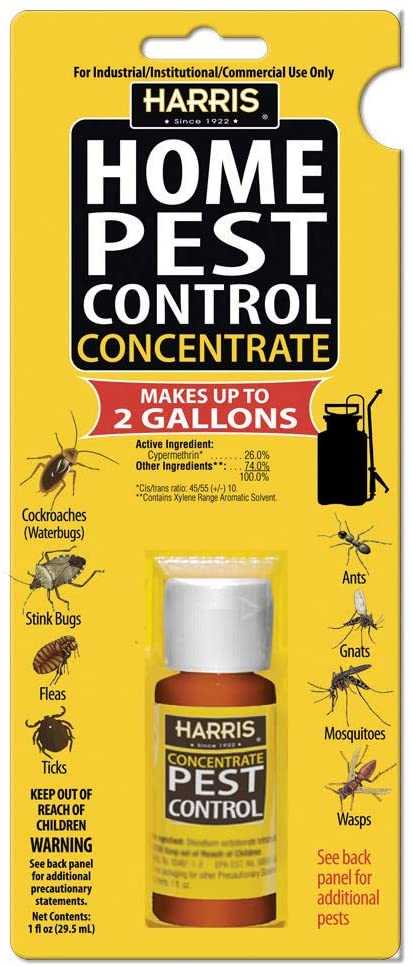Grasping the Art of Bug Control: Proven Techniques for Long-Term Prevention and Obliteration
Pest problems can be a consistent challenge for homeowners and organizations alike, needing a tactical method to effectively take care of and remove these unwanted intruders. By understanding the art of parasite control with tested techniques for lasting prevention and eradication, one can develop a positive protection versus potential hazards. Comprehending the habits of parasites, executing integrated insect management methods, and using natural solutions are simply a few crucial components necessary to accomplishing enduring success in this undertaking. Nonetheless, the complexities of keeping sanitation, conducting routine examinations, and persistent tracking play just as critical duties in sustaining a pest-free environment. As the fight versus parasites remains to develop, embracing a detailed technique comes to be vital in safeguarding your building from potential harm.
Comprehending Insect Actions
To properly carry out insect control techniques, it is necessary to comprehend the complex behaviors exhibited by different parasites in different atmospheres. Recognizing insect habits is a basic aspect of establishing efficient parasite administration strategies. Each pest types has one-of-a-kind practices and choices that affect their feeding, reproduction, and activity patterns. By studying these behaviors, insect control experts can determine one of the most weak spots in the parasite's life process to target treatments better.
Knowing this, parasite control specialists can focus on sealing access factors and eliminating food attractants to deter these insects. By attending to moisture concerns and securing cracks and gaps, problems can be significantly decreased.
Applying Integrated Pest Management
Applying Integrated Bug Monitoring includes making use of an alternative strategy to deal with bug problems by incorporating numerous control methods and strategies. This technique stresses avoidance, monitoring, and control of parasites through a mix of organic, cultural, physical, and chemical interventions. By incorporating multiple methods, Integrated Parasite Administration (IPM) aims to lessen making use of pesticides while efficiently handling pest populations.
Avoidance is also an essential principle of IPM, concentrating on getting rid of elements that attract pests, such as shelter, water, and food. Regular surveillance and examination are essential to spot parasite infestations early and stop them from rising.
Moreover, IPM advertises making use of sustainable and ecologically pleasant insect control approaches to minimize harm to non-target microorganisms and the surrounding environment - portland exterminators a1 for bed bugs. By taking on an Integrated Insect Administration method, organizations and individuals can successfully manage bugs while decreasing reliance on chemical pesticides
Using Natural Treatments
Building upon the foundation of Integrated Bug Administration, a shift in the direction of making use of all-natural remedies provides an environmentally friendly approach to pest control. Natural treatments harness the power of nature to prevent and remove bugs without the usage of harsh chemicals that can damage the environment, humans, and valuable organisms.

In addition, planting pest-repelling plants like marigolds, lavender, and mint around homes and gardens can aid deter insects normally. These plants release odors that pests find undesirable, driving them away without the demand for chemical intervention.
Keeping Sanitation and Hygiene

On a regular basis inspecting and cleaning hard-to-reach areas such as behind devices, under sinks, and in storage space closets is crucial for recognizing and getting rid of potential parasite environments. Clutter should be decreased as bugs commonly seek haven in piles of items or debris. Implementing a routine cleansing schedule and making certain all members of the household or workers are enlightened on appropriate hygiene methods can go a lengthy method in insect prevention. By preserving cleanliness and health requirements, the environment comes to be less congenial to pests, inevitably supporting long-lasting parasite control efforts.
Routine Assessments and Surveillance
Routine inspections and keeping an eye on play a crucial function in proactively determining and resolving prospective insect problems prior to they escalate. By carrying out normal examinations of both the inside and outside of a property, pest control professionals can discover very early indicators of problems, parasite access factors, and problems favorable to bug task.
Regular surveillance permits the early detection of parasite troubles, allowing quick intervention to avoid extensive infestations that can be pricey and tough to eliminate. Furthermore, routine evaluations and keeping an eye on help to abide by regulatory demands and maintain a safe, pest-free environment for owners. Executing a positive strategy via Find Out More regular inspections and surveillance is a keystone of efficient insect management, absolute pest control providing satisfaction and long-term security against parasite threats.
Verdict
In conclusion, understanding the art of bug control includes understanding insect behavior, implementing incorporated pest monitoring, utilizing all-natural treatments, keeping tidiness and health, and conducting normal assessments and monitoring. By complying with these tested strategies for long-lasting avoidance and removal, individuals can efficiently handle insect invasions and create a healthier and safer environment for themselves and their environments.
To effectively implement parasite control approaches, it is crucial to understand the complex behaviors showed by numerous bugs in different environments (a1 residential pest control portland or bed bugs). By examining these actions, bug control professionals can determine the most susceptible factors in the bug's life cycle to target interventions a lot more efficiently
Carrying Out Integrated Pest Administration involves making use of a holistic technique to resolve insect issues by combining numerous control tactics and methods. By preserving cleanliness and health standards, the setting comes to be much less hospitable to pests, inevitably sustaining long-lasting bug control efforts.
By carrying out regular examinations of both the interior and exterior of a property, pest control professionals can discover early signs of infestations, pest entrance factors, and conditions conducive to insect activity.